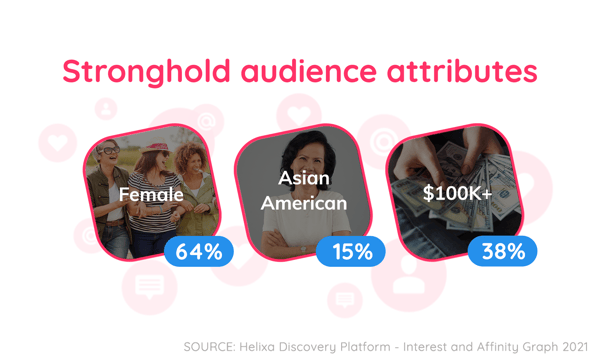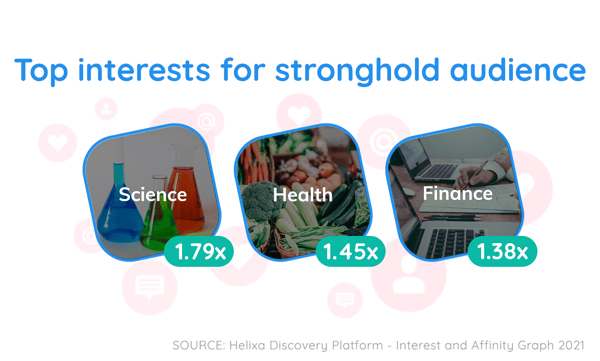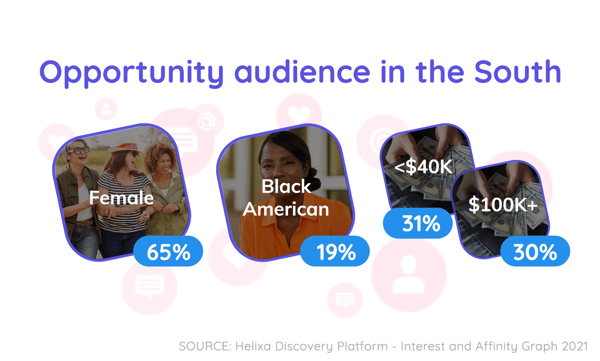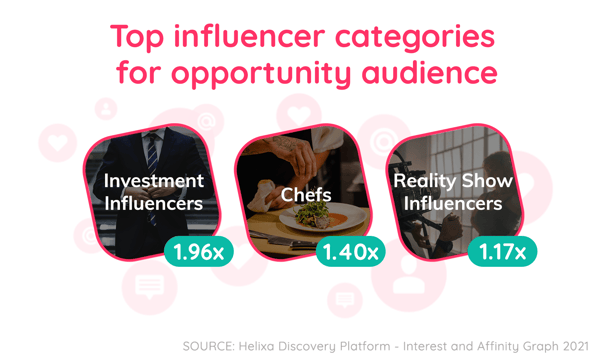One of the biggest shifts during COVID-19 was the immediate switch from brick-and-mortar shopping to home delivery, accelerating a trend we were already seeing.
This was especially true in the grocery delivery space, one of the less common delivery types in the pre-COVID times, which skyrocketed during the lockdown. The grocery delivery market is likely wondering if the change will stick — especially in light of the buzz around market shifts like DoorDash considering an Instacart acquisition and other major players getting involved.
When we analyzed the audience engaging with grocery delivery services — including FreshDirect, Instacart, and Amazon Fresh — we found that Gen X and Boomers were driving the bulk of the online engagement.
For grocery delivery to stick once it’s completely safe to shop in-store again, these companies are going to need to keep these older generations filling their digital carts and bring more of them into the fold.
Let’s take a look at the market for grocery delivery to determine our dedicated base in these older generations and opportunities for growth. By understanding these audiences in detail, we can understand how to reach them more effectively.
Older generations, but earlier adopters
One way to explore the older audience in the overall grocery delivery market is to take a look at the regions where adoption is already stronger than the national average. According to Helixa, those regions include the North East and the West Coast.
When we look at that combined audience (we’ll call them the stronghold audience), we can get some solid insight into what they look like.
As with the larger grocery delivery audience, Gen X and the Baby Boomers in the stronghold regions over-index as female. This audience includes a spike among Asian American consumers, who make up 15 percent of the older generations in the stronghold regions (2.61 times the national average).
These consumers also tend to be more affluent, over-indexing above national averages the most in the $200,000+ bracket at 1.75x. (This audience is starting to look like the average Costco shopper)

But those demographics don’t tell the whole story. They can get you started on your targeting strategy but are less helpful when it comes to speaking their language.
A deeper look shows the consumers, age 41 to 69, in the stronghold regions are thoughtful eaters (3.98x) and home chefs (3.36x). They aren’t just getting groceries to make basic meals that get them through the week — they are carefully considering what goes into their bodies and enjoy the process of cooking it all.
Additionally, despite their higher income bracket, they are money savers (1.98x), so it may be possible to lure in new and returning customers to grocery delivery in these regions with special promotions. From a user experience perspective, displaying discounted items prominently could catch their eye and keep them coming back.

When looking at the top interests for this audience, three categories emerge that could inform the strategy for reaching older audiences in our stronghold regions: science, health, and finance.
Finance and health can be explained by the psychographics we have already uncovered (after all, they are thoughtful eaters and money savers), but their interest in science is something that could be explored through further research.
Their top website category is “farming and agriculture,” so they may appreciate more information on where the food comes from and what’s in season. When these seasonal items are added to a cart, it could be an opportunity to feature some seasonal recipes that highlight other products and ingredients.
Their second-place website category also sheds some light: weight loss and diet (2.37x). This tells me that they have specific goals when it comes to living a healthy lifestyle.
Overall, these psychographics and interests have given us a more complete picture of current grocery delivery customers among older generations in these stronghold regions. Not only does it create a clearer path to reach them, but also a path to find new customers who fit a similar profile in these regions.
It would be tempting to just apply learnings from Gen X and Boomers more broadly, but this is a specific audience within those generations and it has its own quirks and nuances to uncover.
Finding Southern hospitality for grocery delivery
An important part of any market analysis is developing an understanding of the opportunity at hand. It’s great to expand in the areas where you’re winning, but the real opportunity comes from breaking into markets where you don’t yet have a strong audience.
As mentioned earlier, most of the audience for grocery delivery among Gen X and Boomers (and overall) is concentrated in the North East and West Coast. The South is underrepresented here and can provide a pathway to grow this audience.
The thought process is to look at 41-69 who are actually buying groceries online in that the underrepresented regions to understand what they care about, so we can bring similar audiences into the fold. Let’s dive in.

One thing immediately pops out at me: Although the older online shoppers in the South still over-index in the $200,000+ bracket, there is 10 percent more of that audience in the <$40,000 bracket when compared with our stronghold audience.
This tells me that online grocery delivery has more adoption among working-class people in the South, and isn’t limited to the affluent. This audience also over-indexes for Black Americans, who make up 19 percent of the older generations getting their groceries delivered (1.39 times the national average). Those are critical insights when planning campaigns from region to region.
When I dig into the psychographics, I see a similar set of attributes compared to those buying grocery delivery in the stronghold regions above.
One change I did notice is that the Southern audience is more likely to be identified as interested in travel at 2.10x (aren’t we all, these days). Perhaps the grocery delivery services can showcase international ingredients and recipes to keep them interested, as overseas travel is still unattainable for most of us.
Interests for this audience are also similar to the stronghold audience, though the Southern audience has a higher affinity for weight loss websites (3.16x). To understand how these audiences really differ, let’s take a different approach and look at the top influencers, where we see more contrast between the audiences.

The top influencer categories for the Southern audience are investment influencers, chefs, and reality show influencers, in that order (compared to the stronghold audience, where the top categories were chefs and entrepreneurs).
A look into the overall top influencers for this audience paints a slightly different picture, though. The top 20 is dominated by actors and directors, as well as news personalities and politicians.
The audience similarities between the stronghold regions and the South demonstrate that cohesive creative nationwide could possibly be effective. However, the demographic contrasts and differences in influencer affinities need to be taken into consideration when catering that creative messaging to each region.
Making grocery delivery stickier than the toffee in aisle 12
When the COVID-19 vaccines arrived, many consumers undoubtedly returned to shopping in-store. However, with the Delta variant running loose (ugh, right?), some of those people might revert back to grocery delivery.
By employing a data-driven strategy now, these companies could keep consumers ordering online even when brick-and-mortar grocery shopping is completely safe again — especially in the case of the groups that drove the accelerated adoption of this trend
Grocery delivery services need to keep the older generations shopping from home and convert the opportunity audiences so they can keep shifting the national comfort level around ordering groceries from home. To do that successfully, these services are going to need a very deep understanding of who their new customers are and why they buy the way they do so they can keep them coming back.
If you’re interested in analyzing your audience with the full depth and breadth of Helixa, reach out to learn more. We only need 15 minutes of your time.




